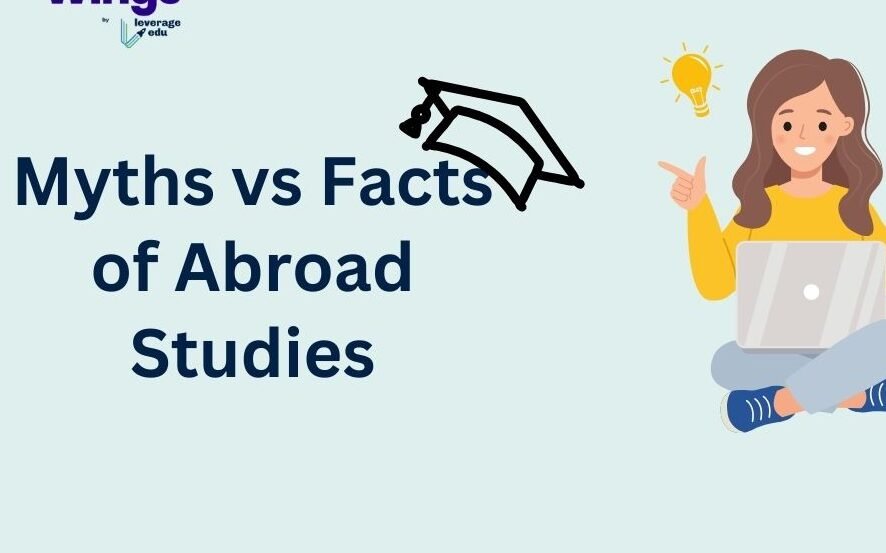International Students and U.S. College Myths
Key Takeaways:
Numerous foreign students have concerns or apprehensions which prevent them from applying for colleges within the U.S.
When selecting a college, the most crucial factors to keep in mind are:
How well students fare once they graduate
The quality of education
Total cost (tuition + living expenses)
Whether or not the college is a good match for the student’s objectives
Obtaining a student visa once accepted is generally not as difficult as individuals perceive.
Learning in America is an excellent experience, but some myths regarding American universities make the students jittery unnecessarily.

Like, Yamily Villalba Paredes, a Paraguayan student, visited America during the Trump presidency. Initially, she feared she wouldn’t be accepted due to the political atmosphere.
But after attending the University of New Mexico and graduating in 2023, she learned that wasn’t the case. She claims American universities do indeed appreciate diversity and even accept international students.
Immigration lawyer Eric Welsh agrees. He says even though some students are concerned with feeling out of place, U.S. schools still actively recruit foreign students and accept them.
However, most students hold myths that prevent them from applying. Here, we tell you why those are not correct.
Myth 1: You Would Need to Be Extremely Wealthy to Study in the United States
Reality: American colleges offer a wide spectrum of prices, and there are many more affordable ones than individuals perceive.
Education consultant Pamela Rambo describes:
Average-priced colleges range from $24,000 to $35,000 per year (tuition + fees).
The most costly schools are as much as $55,000 to $80,000 annually.
The “sticker price” (total amount prior to financial assistance) includes:
Tuition
Housing
Food
Books
Other school charges
But this does not necessarily mean students must pay the sticker price. Most schools give out scholarships (free money for satisfactory grades or abilities), and some even automatically review international students for assistance without an additional application.
Example: The University of New Mexico (UNM) offers scholarships such as the “Amigo Scholarship,” which allows international students to pay the same as in-state students (which is very affordable).
UNM’s Nicole Tami recommends:
Begin searching early for scholarships.
Balance prices among various schools.
Another fantastic alternative? Community colleges.
Much less expensive than large universities.
They provide 2-year degrees (sometimes 4-year degrees).
Several have partnerships with universities so that students can readily transfer afterwards.
Robin Helms of the Association of Community College Trustees indicates that these colleges are “a smart choice for students who want an affordable education that prepares them for global jobs.”
Myth 2: It’s Practically Impossible to Obtain a Student Visa

Truth: Although the process was held up at COVID-19 times (since embassies were shut), it’s typically not hard if you do it correctly.
Eric Welsh explains:
All U.S. colleges that admit international students have a Designated School Official (DSO) to assist students with visa documents.
The majority of students receive a visa interview a few days or weeks following their application.
Tip: If you were previously refused a U.S. visa, or if you believe you will experience issues, it is advisable to seek the services of an immigration attorney.
Myth 3: All U.S. colleges are located in risky big cities
Truth: The U.S. has nearly 4,000 colleges, and they are located in all kinds of places—small towns, quiet suburbs, and big cities.
Pamela Rambo says:
Safety varies depending on the location.
Students and parents can check crime statistics on the U.S. Department of Education’s Campus Safety website.
Real Student Experience:
Magdalena Markowska, a Polish student at Stony Brook University (New York), says:
“My campus is very safe—I’ve never felt in danger.”
Even in large cities such as New York, most campuses are situated in busy, well-guarded locations.
Nicole Tami (UNM) contributes:
Their campus police are pleasant and trained to deal with students.
They emphasize preventing crimes such as theft.
Myth 4: American Colleges Are All About Party Time
Reality: Film and television overemphasize party life.
Nicole Tami reports:
Yes, there are some students who party, but the majority are serious students.
Schools have severe policies against underage drinking and drug use.
There are plenty of legal, safe ways to have fun, such as school-sponsored activities.
Student Advice:
Pamela Rambo advises considering:
Academic quality – Are there strong programs in your area of interest?
Job outcomes – Do graduates find good jobs?
Cost – Can you pay for it after scholarships?
Personal fit – Will you like it there?
She continues: “Students should remember why they’re in college—to learn, grow, and prepare for a successful career.”

